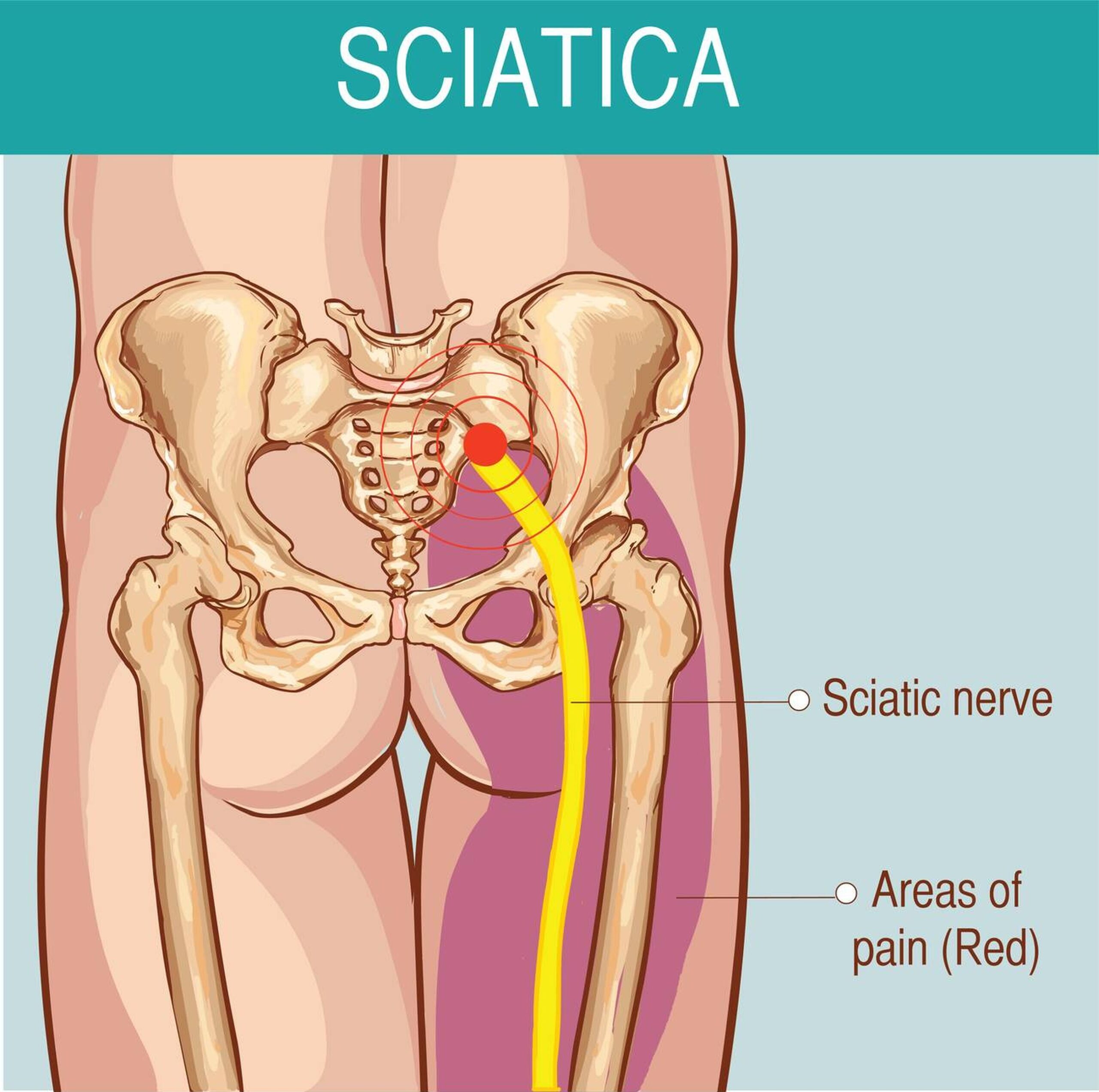Best Sciatica Treatment in Delhi NCR: A Patient’s Guide
 Sciatica is pain caused by irritation or compression of the sciatic nerve. It’s a symptom of an underlying issue (often a herniated disc or spinal stenosis), not a diagnosis by itself. If you’re searching for the best sciatica treatment in Delhi NCR, an accurate diagnosis and a step‑wise treatment plan are the first steps toward lasting relief.
Sciatica is pain caused by irritation or compression of the sciatic nerve. It’s a symptom of an underlying issue (often a herniated disc or spinal stenosis), not a diagnosis by itself. If you’re searching for the best sciatica treatment in Delhi NCR, an accurate diagnosis and a step‑wise treatment plan are the first steps toward lasting relief.
On this page
Common Causes and Symptoms
Typical causes of sciatic nerve irritation include:
- Herniated disc: Disc material bulges and presses on a nerve root.
- Spinal stenosis: Narrowing of the spinal canal that compresses the nerves.
- Spondylolisthesis: One vertebra slips forward on another, pinching the nerve.
- Piriformis syndrome: Spasm or tightness of the piriformis muscle in the buttock can irritate the nearby sciatic nerve.
Symptoms (usually on one side) may include:
- Radiating pain: Sharp, shooting, or burning pain from the lower back into the buttock and down the leg.
- Numbness/tingling: “Pins and needles” in the leg or foot.
- Weakness: Difficulty lifting the foot or toes (sometimes “foot drop”).
Urgent “Red Flag” Symptoms — Seek Emergency Care
- New loss of bowel or bladder control
- Severe or rapidly worsening leg weakness
- Numbness in the saddle (perineal/groin) area
Accurate Diagnosis
Most new cases improve with time and conservative care. Imaging isn’t always required immediately, but helps when symptoms persist or red flags are present.
- Clinical exam: History, neurologic exam, and the straight‑leg raise test help localize the problem.
- MRI: Best view of discs, nerves, and stenosis; often ordered if symptoms persist >6 weeks, significant weakness is present, or before injections/surgery.
- X‑rays: Show alignment issues (e.g., spondylolisthesis), fractures, and arthritis.
- EMG/NCS: Electromyography and nerve conduction studies can confirm nerve irritation or distinguish from other conditions when symptoms persist.
Sciatica Treatment in Delhi NCR: A Step‑Wise Approach
Most patients improve significantly with non‑surgical care. Surgery is reserved for persistent pain despite treatment or for significant neurologic deficits.
Non‑Surgical (First‑Line) Care
- Medications (as prescribed): Short courses of anti‑inflammatories (if safe for you), and targeted nerve‑pain agents when appropriate; avoid long‑term opioid use.
- Physical therapy: Guided stretching, core/hip strengthening, nerve glides, posture and lifting mechanics to reduce nerve tension.
- Epidural steroid injections: Anti‑inflammatory medicine placed near the irritated nerve root (e.g., transforaminal ESI) can provide significant, targeted relief.
- Lifestyle & ergonomics: Avoid prolonged sitting, optimize your workstation, and use safe bending/hip‑hinge technique.
Surgical Options (When Indicated)
Surgery may be considered if pain is severe and persistent despite conservative care, or if there’s progressive weakness.
- Microdiscectomy: Minimally invasive removal of the portion of a herniated disc pressing on the nerve; highly effective for leg‑dominant pain from a disc herniation.
- Laminectomy: Removes a small portion of bone (lamina) to create more space for nerves in spinal stenosis.
- Decompression with/without fusion (select cases): For instability or certain spondylolisthesis patterns after specialist evaluation.
Outcomes: For leg‑dominant pain from a single‑level disc herniation, microdiscectomy has a high success rate for rapid leg pain relief.
Self‑Care & Prevention
- Short, frequent walks; avoid long periods of sitting.
- Core and hip strengthening as guided by a physiotherapist.
- Weight management, smoke cessation, and adequate sleep.
- Ergonomic seating and proper lifting technique.
Risks & Recovery (Brief)
- Epidural injections: Relief can last weeks to months; uncommon risks (bleeding, infection, temporary sugar rise) are discussed beforehand.
- Surgery: Most patients walk the same day and return to light activity within 1–2 weeks; your surgeon will tailor restrictions and rehab.
Frequently Asked Questions
Can sciatica go away on its own?
Many acute cases improve within a few weeks with activity modification and targeted exercises. If symptoms persist beyond 6–8 weeks or you have significant weakness, see a spine specialist.
Do I always need an MRI?
No. MRI is most helpful when red flags are present, when pain/weakness persists despite care, or before injections/surgery. Your doctor will decide based on symptoms and exam.
Are steroid injections safe?
Epidural injections can reduce inflammation around the nerve and provide relief for weeks to months. They’re usually part of a broader plan including physiotherapy. Risks are uncommon but will be discussed with you.
When is surgery the right choice?
When disabling leg pain continues despite a full course of conservative care, or if there’s progressive neurologic deficit. Microdiscectomy for a confirmed disc herniation has a very high success rate for relieving leg pain.
When to See a Spine Specialist in Delhi NCR
If your pain is severe, lasts more than a few weeks, or you notice significant weakness or numbness, consult a specialist. Timely diagnosis helps you avoid chronic pain and get back to your normal activities faster.
Don’t Let Sciatica Control Your Life
Get a precise diagnosis and a personalized plan for lasting relief.
Areas we serve
Delhi‑NCR: Delhi, Gurugram, and Noida.
References
- NINDS/NIH — Sciatica
- NICE Guideline — Low back pain and sciatica
- Orthobullets — Lumbar Disc Herniation
About the Author
This article was medically reviewed by Dr. Neelabh, a senior orthopedic and spine surgeon in Delhi NCR with extensive experience in minimally invasive spine surgery and the treatment of sciatica, herniated discs, and spinal stenosis.
Disclaimer: Educational information only; not a substitute for medical advice. Seek emergency care for red‑flag symptoms (new bowel/bladder loss, severe or worsening leg weakness, saddle numbness).
